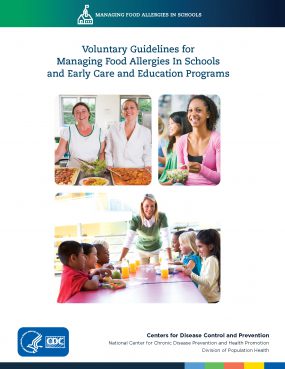Food Allergies

Food allergies are a growing food safety and public health concern that affect an estimated 8% of children in the United States.1 That’s 1 in 13 children, or about 2 students per classroom. A food allergy occurs when the body has a specific and reproducible immune response to certain foods.2 The body’s immune response can be severe and life threatening, such as anaphylaxis. Although the immune system normally protects people from germs, in people with food allergies, the immune system mistakenly responds to food as if it were harmful.
There is no cure for food allergies. Strict avoidance of the food allergen is the only way to prevent a reaction. However, because it is not always easy or possible to avoid certain foods, staff in schools, out-of-school time, and early care and education programs (ECE) should develop plans for preventing an allergic reaction and responding to a food allergy emergency, including anaphylaxis. Early and quick recognition and treatment can prevent serious health problems or death.
Eight foods or food groups account for most serious allergic reactions in the United States: milk, eggs, fish, crustacean shellfish, wheat, soy, peanuts, and tree nuts.2
The symptoms and severity of allergic reactions to food can be different between individuals and can also be different for one person over time. Anaphylaxis is a sudden and severe allergic reaction that may cause death.3 Not all allergic reactions will develop into anaphylaxis and more than 40% (2 in 5) of children with food allergies in the United States have been treated in the emergency department.1
- Ensure the daily management of food allergies in individual children.
- Prepare for food allergy emergencies.
- Provide professional development on food allergies for staff members.
- Educate children and family members about food allergies.
- Create and maintain a healthy and safe educational environment.

